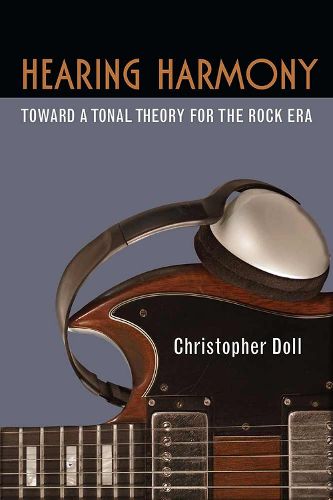Readings Newsletter
Become a Readings Member to make your shopping experience even easier.
Sign in or sign up for free!
You’re not far away from qualifying for FREE standard shipping within Australia
You’ve qualified for FREE standard shipping within Australia
The cart is loading…






Hearing Harmony offers a listener-based, philosophical-psychological theory of harmonic effects for Anglophone popular music since the 1950s. It begins with chords, their functions and characteristic hierarchies, then identifies the most common and salient harmonic-progression classes, or harmonic schemas. The identification of these schemas, as well as the historical contextualization of many of them, allows for systematic exploration of the repertory’s typical harmonic transformations (such as chord substitution) and harmonic ambiguities. Doll provides readers with a novel explanation of the assorted aural qualities of chords, and how certain harmonic effects result from the interaction of various melodic, rhythmic, textural, timbral, and extra-musical contexts, and how these interactions can determine whether a chordal riff is tonally centered or tonally ambiguous, whether it sounds aggressive or playful or sad, whether it seems to evoke an earlier song using a similar series of chords, whether it sounds conventional or unfamiliar.
$9.00 standard shipping within Australia
FREE standard shipping within Australia for orders over $100.00
Express & International shipping calculated at checkout
Hearing Harmony offers a listener-based, philosophical-psychological theory of harmonic effects for Anglophone popular music since the 1950s. It begins with chords, their functions and characteristic hierarchies, then identifies the most common and salient harmonic-progression classes, or harmonic schemas. The identification of these schemas, as well as the historical contextualization of many of them, allows for systematic exploration of the repertory’s typical harmonic transformations (such as chord substitution) and harmonic ambiguities. Doll provides readers with a novel explanation of the assorted aural qualities of chords, and how certain harmonic effects result from the interaction of various melodic, rhythmic, textural, timbral, and extra-musical contexts, and how these interactions can determine whether a chordal riff is tonally centered or tonally ambiguous, whether it sounds aggressive or playful or sad, whether it seems to evoke an earlier song using a similar series of chords, whether it sounds conventional or unfamiliar.